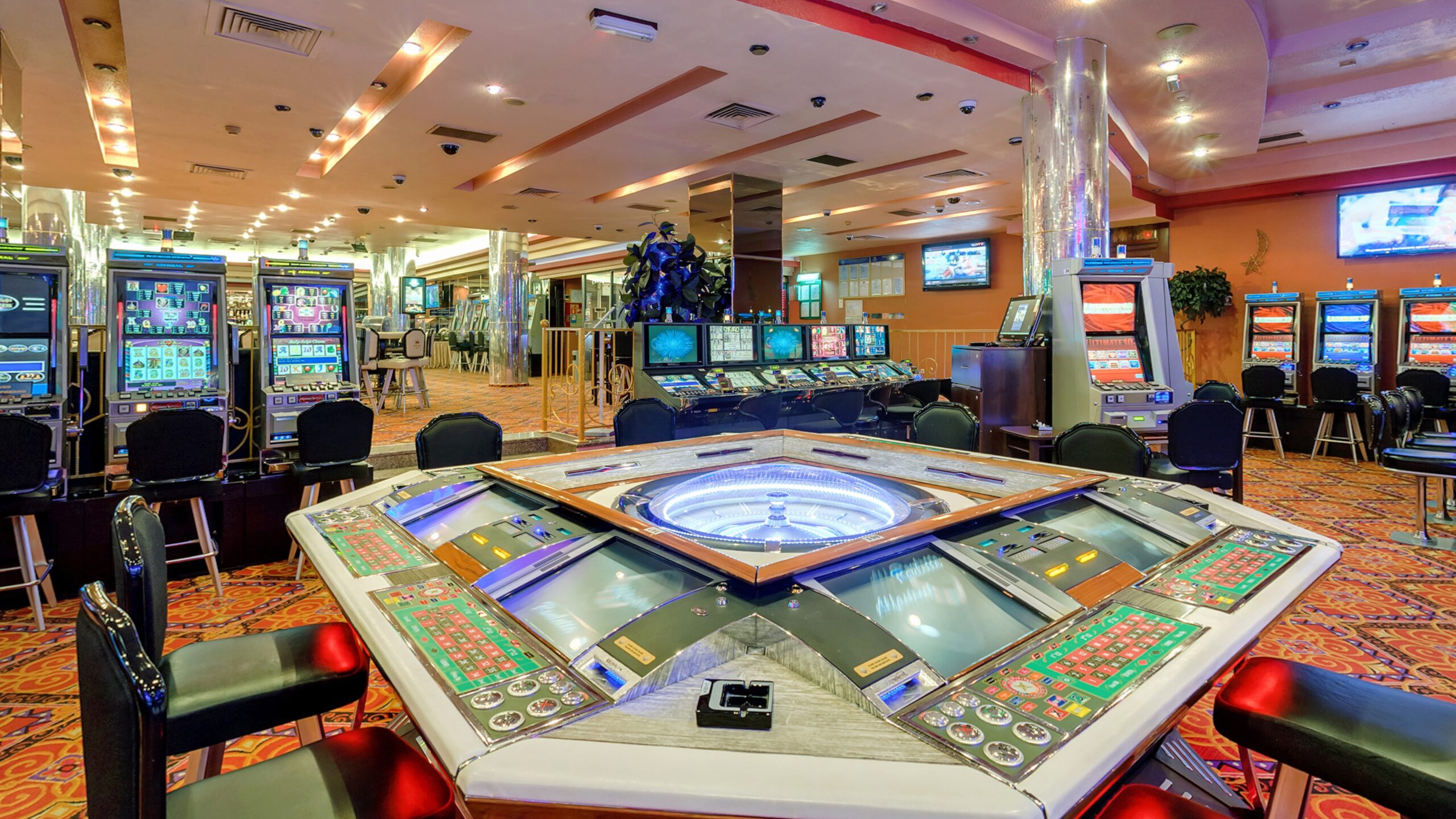Alright, let’s kick things off with the basics. When you stroll into a lively South African casino—whether it’s Sun City, GrandWest, or Montecasino—you’re met with rows and rows of shimmering slot machines. Ever wonder why some seem to spit out small wins often, while others make you wait longer for a hefty jackpot? That magic lies in one word: volatility.
Why Slot Volatility Matters in South African Casinos
When you step into a South African casino, you’re faced with rows and rows of slot machines, each offering a unique experience. However, not all slots are created equal, and understanding the volatility of a machine is key to maximizing your experience. Just like any competitive game, you wouldn’t enter a rugby match without understanding the rules, would you? The same logic applies to slot machines. Knowing a game’s volatility helps you decide how to approach it—whether you’re in it for the long haul with frequent, smaller wins or you’re chasing the excitement of a big, rare jackpot.
Volatility, also known as variance, essentially tells you how risky a game is. If you prefer frequent payouts, you’ll be drawn to low volatility slots, which offer smaller wins but more often. This kind of game provides a steady stream of wins, helping you extend your gameplay without having to dig deep into your bankroll. On the other hand, if you’re feeling bold and looking for a big win, high volatility slots are the ones you’ll want to explore. These machines are less likely to pay out, but when they do, they offer massive prizes that can change your life with just one lucky spin.
South African casinos are filled with hundreds of slots that vary in volatility, from classic machines like “Fruit Fiesta” to progressive jackpots such as “Mega Moolah Isis.” By understanding the volatility of each machine, you can select one that aligns with your playing style and what you’re hoping to get out of the experience. High volatility slots often have larger jackpot prizes but require a higher level of risk and patience, while low volatility slots are perfect for those looking to play longer with smaller but more frequent rewards.
In a busy casino environment, it’s crucial to match your game choice to your mood and budget. If you’re just looking for some fun without risking too much of your budget, low volatility slots are ideal, allowing for extended play without constant worry. However, for those who want to feel the rush of high-stakes gambling and are ready to take bigger risks, high volatility games offer the ultimate thrill, with the potential for large payouts. Understanding volatility will ultimately shape your overall casino experience and can help you make more informed decisions, ensuring you have a great time while playing.
How Slot Machine Volatility Affects Your Payouts
| Volatility Level | Frequency of Wins | Size of Wins | Ideal for | Example Games |
| Low | Very Frequent | Small | Casual players, budget-conscious | “Fruit Fiesta,” “Starburst” |
| Medium | Balanced | Medium | Players looking for a mix of excitement and consistency | “Thunderstruck II,” “Gonzo’s Quest” |
| High | Rare | Huge | High-stakes players, thrill-seekers | “Mega Moolah,” “Book of Dead” |
How to Spot a High Volatility Slot in South Africa
Alright, you’re walking into Gold Reef City Casino, coins jingling in your pocket. How do you tell if a machine’s high volatility? Keep an eye out for these tell-tale signs:
- Jackpot Size
- High volatility slots typically feature large jackpot prizes. The bigger the jackpot, the higher the volatility. These machines often offer massive rewards but with fewer opportunities to win, meaning you’re taking on more risk for a chance at the big prize.
- Payout Table
- If you take a look at the payout table and notice that the top prizes are significantly higher than the smaller ones, this could be a sign of high volatility. The higher the potential rewards, the less frequently they appear. A disproportionate payout structure is a common trait of these types of slots.
- Bonus Features
- High volatility slots often come with exciting bonus features like free spins, multipliers, and bonus rounds. These features are designed to offer larger payouts, but they don’t activate as often as in lower volatility games. When they do trigger, however, they can lead to big wins.
- Bet Size Flexibility
- Many high volatility slots allow you to adjust your bet size considerably. This flexibility often means you can bet higher amounts, which is a common feature in high volatility slots where bigger bets can lead to even bigger potential rewards.
- Longer Wait Times Between Wins
- If you notice that the wins come infrequently, and the gap between payouts feels longer than usual, this is another indicator that the slot might have high volatility. These machines tend to have long dry spells, followed by large wins.
- Slot Theme and Style
- While not always a definitive clue, the theme of the slot can sometimes give you an idea of its volatility. Progressive jackpot slots or those based on popular big-money themes (like “Mega Moolah” or “Wheel of Fortune”) tend to be higher volatility.
- High RTP (Return to Player) Percentage
- Some high volatility slots may have a higher RTP (around 96% and above). While RTP can vary, high volatility slots typically offer higher RTP percentages, but these are compensated by the rarity of wins.
- Reel Set and Number of Paylines
- Paylines can give you clues about volatility. High volatility slots often have fewer paylines, and they may feature more complex reel structures. Fewer paylines can mean higher risk because fewer opportunities for smaller wins are available.
- Gaming Provider
- Well-known developers like Microgaming, NetEnt, and Play’n GO are known for their high volatility slots. By learning which providers focus on these types of machines, you can more easily spot them in a casino setting.
Telltale Signs of Low Volatility Slots
If you’re the type of player who enjoys long, steady play with consistent wins, low volatility slots are what you should be looking for. These games are designed to keep the action moving without placing a huge strain on your bankroll. The most obvious sign of a low volatility slot is the smaller jackpot. While they might not offer the life-changing prizes of high volatility slots, they tend to have more frequent payouts, which allows for a more relaxed playing experience. These jackpots are often modest but are frequent enough to keep things interesting without the crushing risk of going on a losing streak.
Another key characteristic of low volatility slots is the frequency of payouts. With these games, you can expect wins to happen more regularly, although the amounts may be on the smaller side. The key here is that the wins keep coming, which provides a sense of momentum and helps you stay engaged in the game longer. You won’t hit the massive jackpots that high volatility slots offer, but the smaller, more frequent wins ensure that your bankroll is continually replenished, giving you more time to enjoy the game without constantly worrying about your funds running low.
Low volatility slots also tend to feature simpler bonus features compared to their high volatility counterparts. Instead of intricate, multi-layered bonus rounds or huge multipliers, you’ll often find more straightforward features like wilds or respins. These bonuses are typically easier to trigger and can result in quick wins, making the game feel more accessible and less stressful. The simplicity of these bonus features allows players to enjoy the game without needing to keep track of complex mechanics, offering a fun and relaxed experience.
Finally, low volatility slots are often more accommodating to players who prefer to bet smaller amounts. Many of these games have low minimum betting requirements, allowing you to stretch your budget and enjoy extended play sessions. Whether you’re a casual player or just looking to pass the time without risking too much, these games provide the perfect environment. They’re ideal for those who want to experience the thrill of slots without having to place high-stakes bets or endure long dry spells without payouts.
Medium Volatility: The Sweet Spot for Many South Africans
| Volatility Level | Frequency of Wins | Size of Wins | Betting Range | Ideal For |
| Medium | Regular but not constant | Balanced—small and big wins | Moderate to high bets | Players seeking excitement and balance |
| Example Games | “Thunderstruck II”, “Avalon” | Mix of small, medium, and occasional big wins | Flexible betting options | Players who enjoy variety and strateg |
Reading the Paytable: Your Secret Weapon
The paytable is like the “menu” of a slot machine. It’s your essential tool for understanding how the game works, and it provides valuable insights into the symbols, payouts, and special features of the machine. Before you start playing, always make sure to check out the paytable. Here’s what you’ll find:
- Symbol Values
- The paytable tells you how much each symbol is worth. It shows the payouts for matching symbols and gives you a clear understanding of which ones bring in the most cash.
- Winning Combinations
- The paytable also lists the different combinations of symbols that result in a win. For example, it will tell you how many matching symbols you need to line up on a payline to win a prize.
- Payouts and Jackpots
- It breaks down the prize structure, showing you how much you can win for each combination. High volatility slots often feature large jackpots that are rare to hit, along with smaller payouts that come up more frequently.
- Special Features and Bonuses
- High volatility slots tend to have big bonuses, like free spins or multipliers. The paytable will explain how to activate these features and how much extra you could win during the bonus rounds. These bonuses are often the key to unlocking massive payouts, but they don’t trigger as often as in lower volatility slots.
- Bet Size and Line Information
- The paytable will also give you information about the minimum and maximum bet sizes. Some games allow you to bet on multiple lines, and the paytable will explain how much each line costs and how your total bet is calculated.
- Volatility Indicator
- Some paytables include information about the volatility of the game. This can give you an idea of how frequently wins will occur, helping you decide if the game fits your playing style.
- Game Rules
- Along with payouts, the paytable explains the rules of the game, including any specific conditions that might affect how the game plays. For instance, certain symbols might trigger special features or multipliers, and the paytable will outline the specifics of how these work.
- RTP (Return to Player) Percentage
- The paytable often provides information on the RTP, which is the percentage of all wagers that a game will pay back to players over time. Knowing the RTP can give you an idea of how favorable the odds are for a particular slot.
Using RTP to Guess Volatility
You’ve probably heard of RTP—Return to Player percentage. It’s a critical number that many players rely on when choosing a game, as it shows how much of the total money wagered is likely to be returned to players over time. But what does RTP really mean in terms of volatility? While RTP and volatility aren’t exactly the same thing, they do go hand in hand, and understanding one can give you insights into the other.
RTP is a helpful guide when you’re trying to figure out the overall volatility of a slot machine. If you know the RTP of a game, you can make an educated guess about its volatility. For instance, slots with higher RTPs (96% or above) tend to have lower volatility, meaning that you’ll experience more frequent, smaller wins. These types of slots are ideal for players who prefer longer playtimes and less risk.
On the other hand, when a game has an RTP in the range of 94%-96%, it usually indicates that the slot has a medium-high volatility. In this case, you can expect more variability in your winnings. Wins won’t come as frequently, but they’ll likely be bigger when they do appear. These types of games strike a balance between risk and reward, offering excitement for those who like the thrill of a potential big payout.
Finally, if a game has an RTP below 94%, it’s a good indication that the volatility is high. These slots will have longer dry spells, with wins coming less often, but when you do hit a winning combination, the rewards tend to be much larger. High volatility slots are best suited for players who are willing to take bigger risks in exchange for the chance at a large jackpot or substantial payout.



